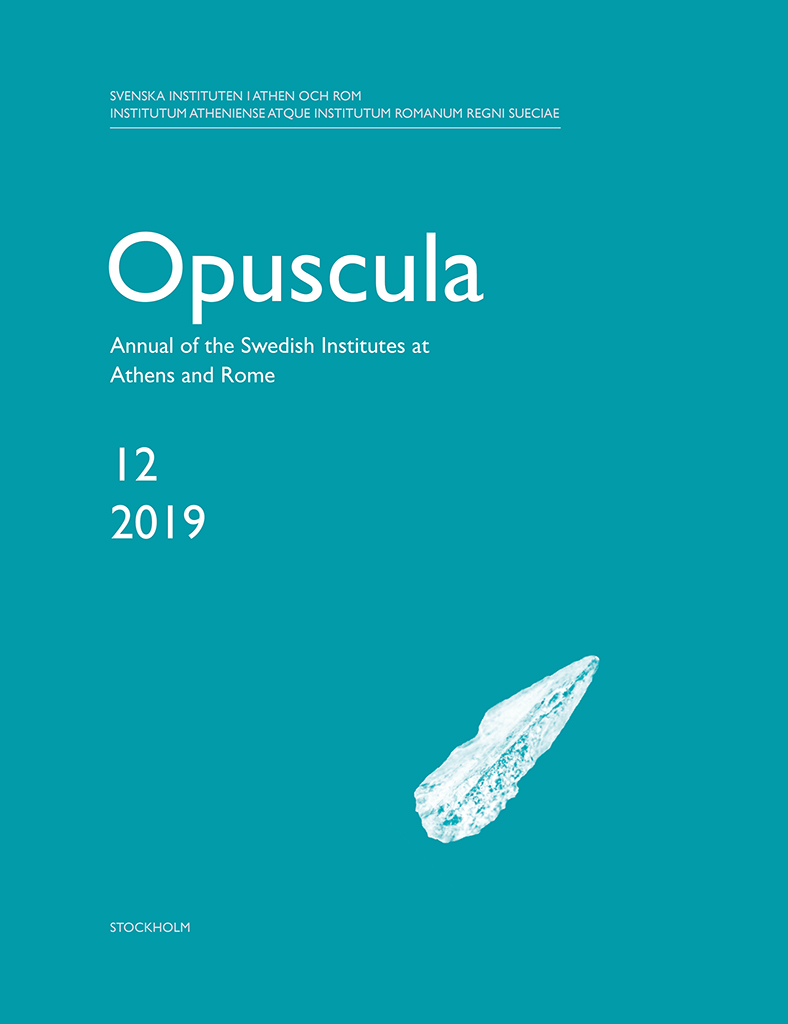Opuscula is published by the Swedish Institutes at Athens and Rome, with the aid of a grant from the Swedish Research Council. Distributed by Eddy.se AB. View journal at ERIH PLUS. All content available with open access. Palaepaphos-Skales Tomb 277. More prestigious burials. With an appendix by Maria A. Socratous By Vassos Karageorghis (The Cyprus Institute, Cyprus) & Efstathios Raptou (Cyprus Museum, Cyprus) Abstract Tomb 277 in the Skales cemetery at Palaepaphos, excavated by the Cyprus Department of Antiquities, is among the richest ever found in the south-west of the island. It dates to the Cypro-Geometric III period (c. 900–750 BC) and was used for multiple burials of important members of the Palaepaphian society, namely warriors and important women (priestesses of the Great Goddess?) judging from the abundant offerings of arms and armour as well as gold jewellery respectively (including gold plaques embossed with the head of the Egyptian goddess Hathor). Notable among the offerings are two bronze basins, six small hemispherical bronze bowls, two bronze mace-heads (symbols of authority), a bronze shield of a rare type, and two richly decorated belts of oriental type. We also mention two iron swords and a bronze spearhead. Among the pottery we note…
Published by the Swedish Institute at Athens. Distributed by Astrom Editions. Celebrations of death and divinity in the Bronze Age Argolid. Proceedings of the Sixth International Symposium at the Swedish Institute at Athens, 11–13 June, 1988 Edited by Robin Hägg & Gullög C. Nordquist Abstract Twenty-four papers on various aspects of burial customs and religious cult practice in the region Argolis (Greece) during the Bronze Age, read at an international conference in Athens; the papers are followed by transcripts of the discussions of the symposium. The papers are arranged in six groups, discussing (1) ceremonial practices in the Early and Middle Helladic periods, (2) mortuary customs, state formation and Mycenaean society, (3) burial rites in tumuli, tholoi and chamber tombs, (4) symbols and symbolism in Mycenaean celebrations, (5) Mycenaean cults and cult practices, and (6) religious aspects of the post-Bronze-Age period. Contents Preface (p. 7) Ceremonial practices in the Early and Middle Helladic periods Daniel J. Pullen, ‘Early Helladic burials at Asine and Early Bronze Age mortuary practices’, pp. 9–12 Miriam Caskey, ‘Thoughts on Early Bronze Age hearths’, pp. 13–21 Carol Zerner, ‘Ceramics and ceremony: Pottery and burials from Lerna in the Middle and early Late Bronze Ages’, pp. 23–34…


